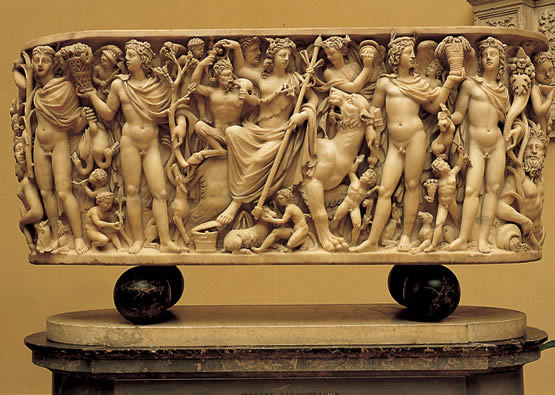
All the archaic tombs, They became the house of the deceased, as was done in Asia Minor, but with the burial the art of the sarcophagus develops.
The main terracotta sarcophagus of that time is that of Clazomene, which had erotic scenes from the archaic Ionic world painted, as well as war scenes related to funeral games and the cult of the dead. At this time the art of the sarcophagus begins and becomes independent from Cretan art.
All the Mycenaean funerary stelae They have their megalithic roots in the menhirs, and bestilos.
Then they are transformed and hellenized, adding bas-reliefs and statues of kuroi, which can be representations of the deceased, or representing sphinxes, lions, or mermaids.
Inside the tombs the lekytoy are in the funerary equipment, they can be glasses with ointments, they are always decorated with funerary elements. Terracotta figures representing female deities of fertility and life are also common.
In Magna Graecia both the tombs like sarcophagi they have an extraordinary architectural tendency.
It was during the XNUMXth and XNUMXth centuries BC that luxury reached its peak, but Demetrio Faleroo forbade luxury in the tombs.
One of the greatest manifestations of funerary art was in the Necropolis of Tarentum, which had funeral rites and ornaments, with gold, terracotta and vases.
Later the fashion for stone and wooden sarcophagi, very well decorated, prevailed.
All the Hellenistic tombs They are great, the Macedonians are characterized by their art, and represent the heyday of the majestic tombs.
When it begins to incinerate, the architecture of the tombs and the funeral rite change, they are no longer so majestic, but the funerary equipment continues its splendor, with gold and precious stones.
Good info! :3